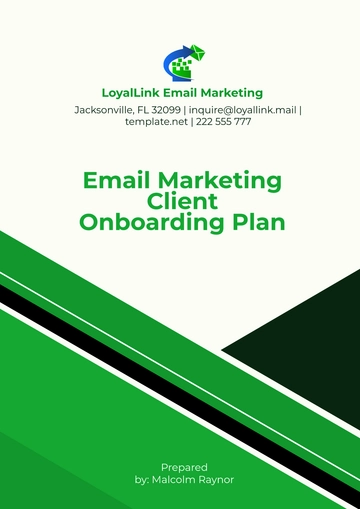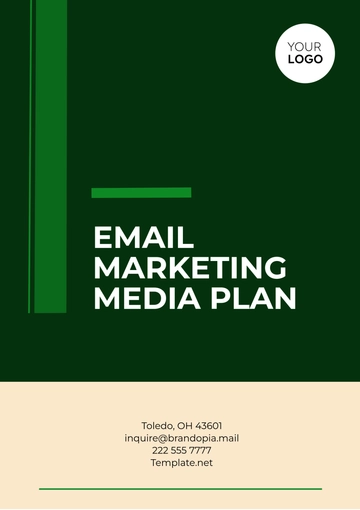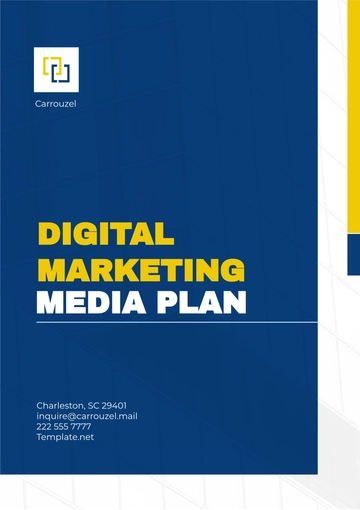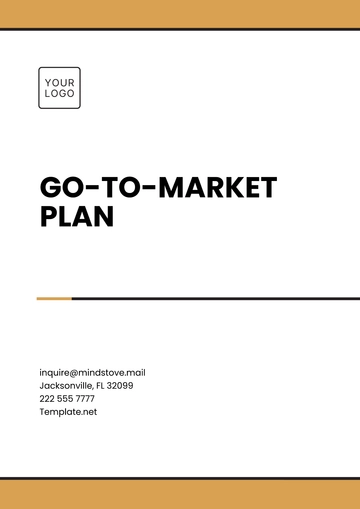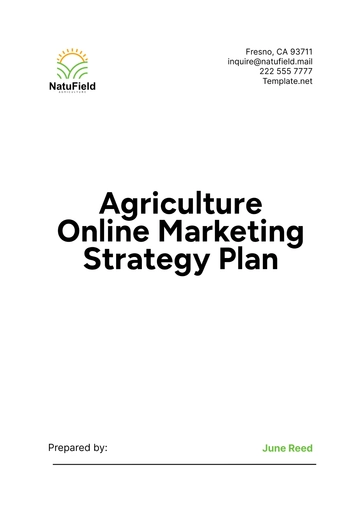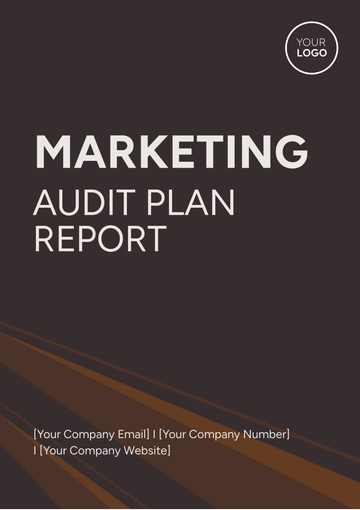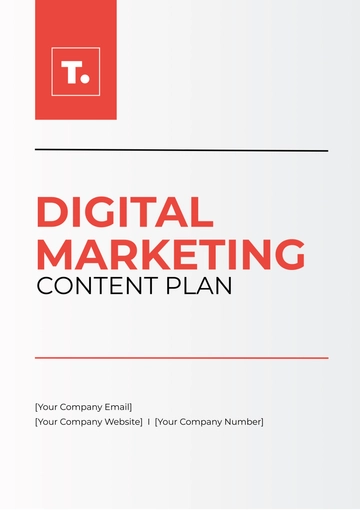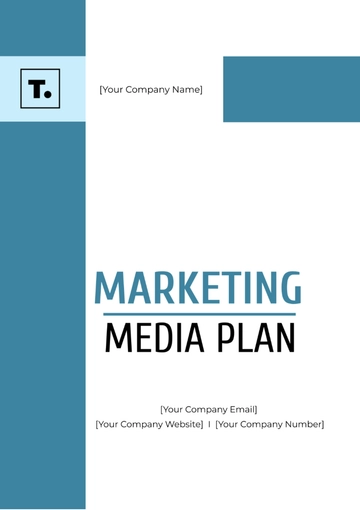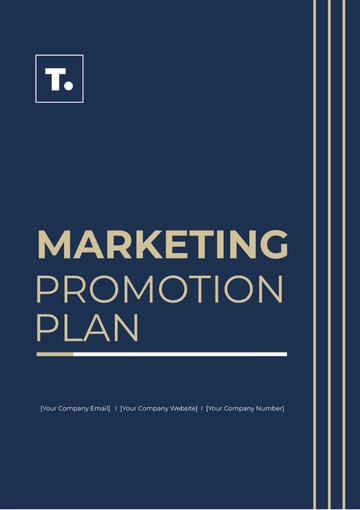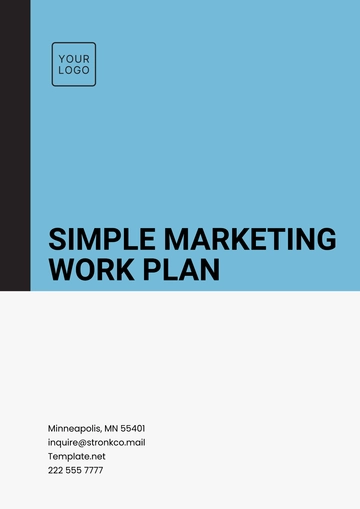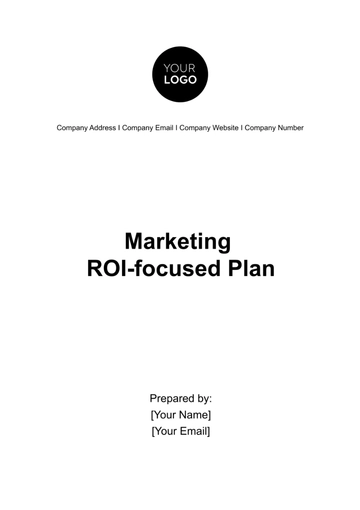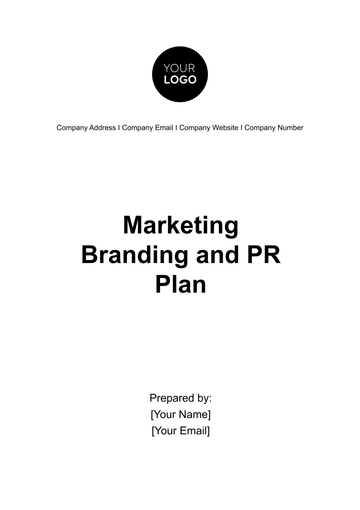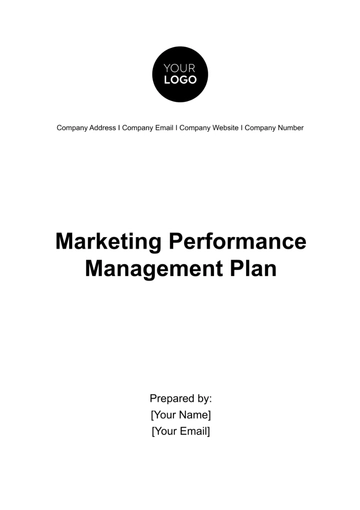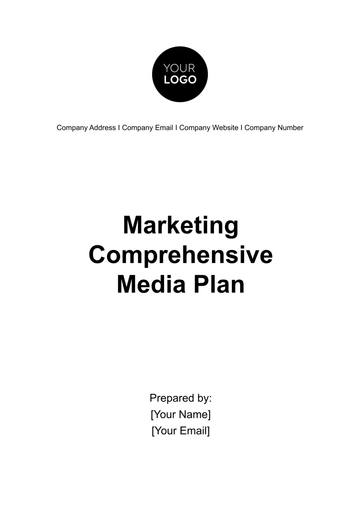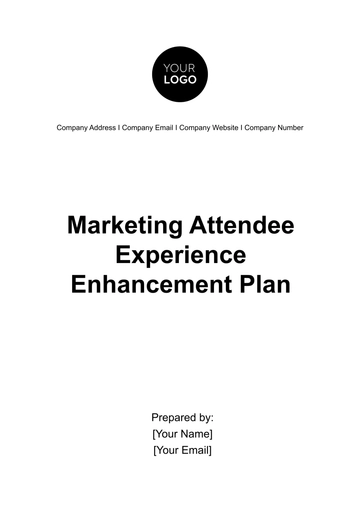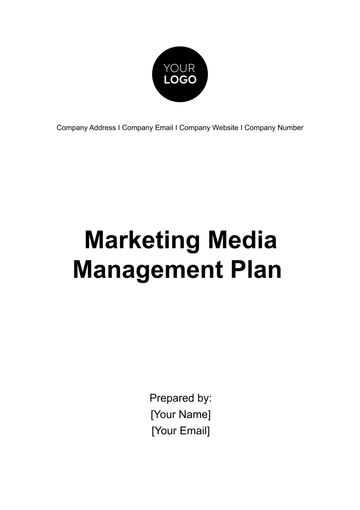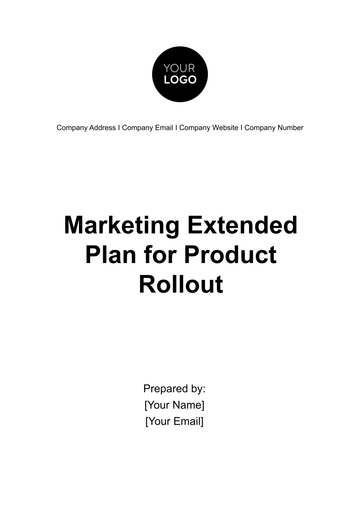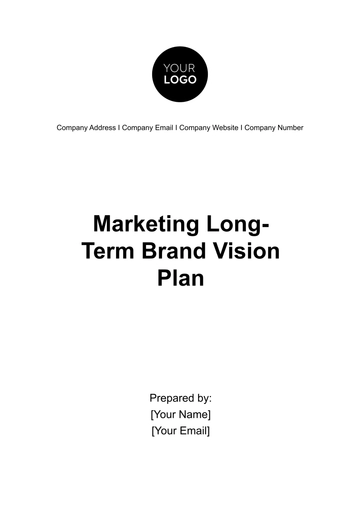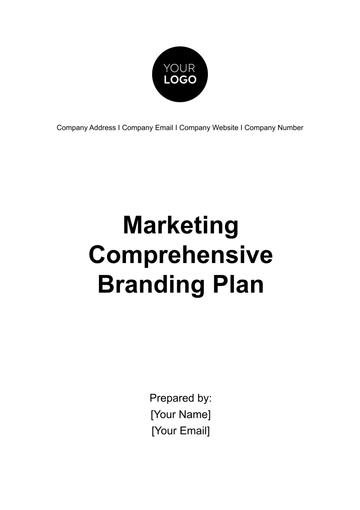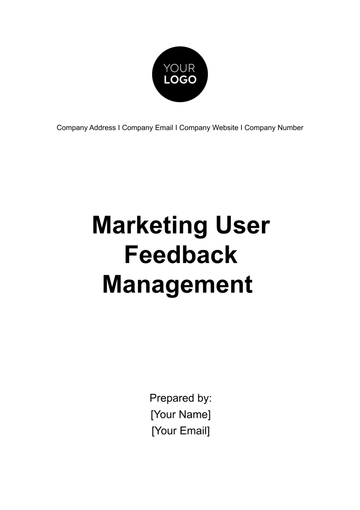Free Digital Marketing Media Plan
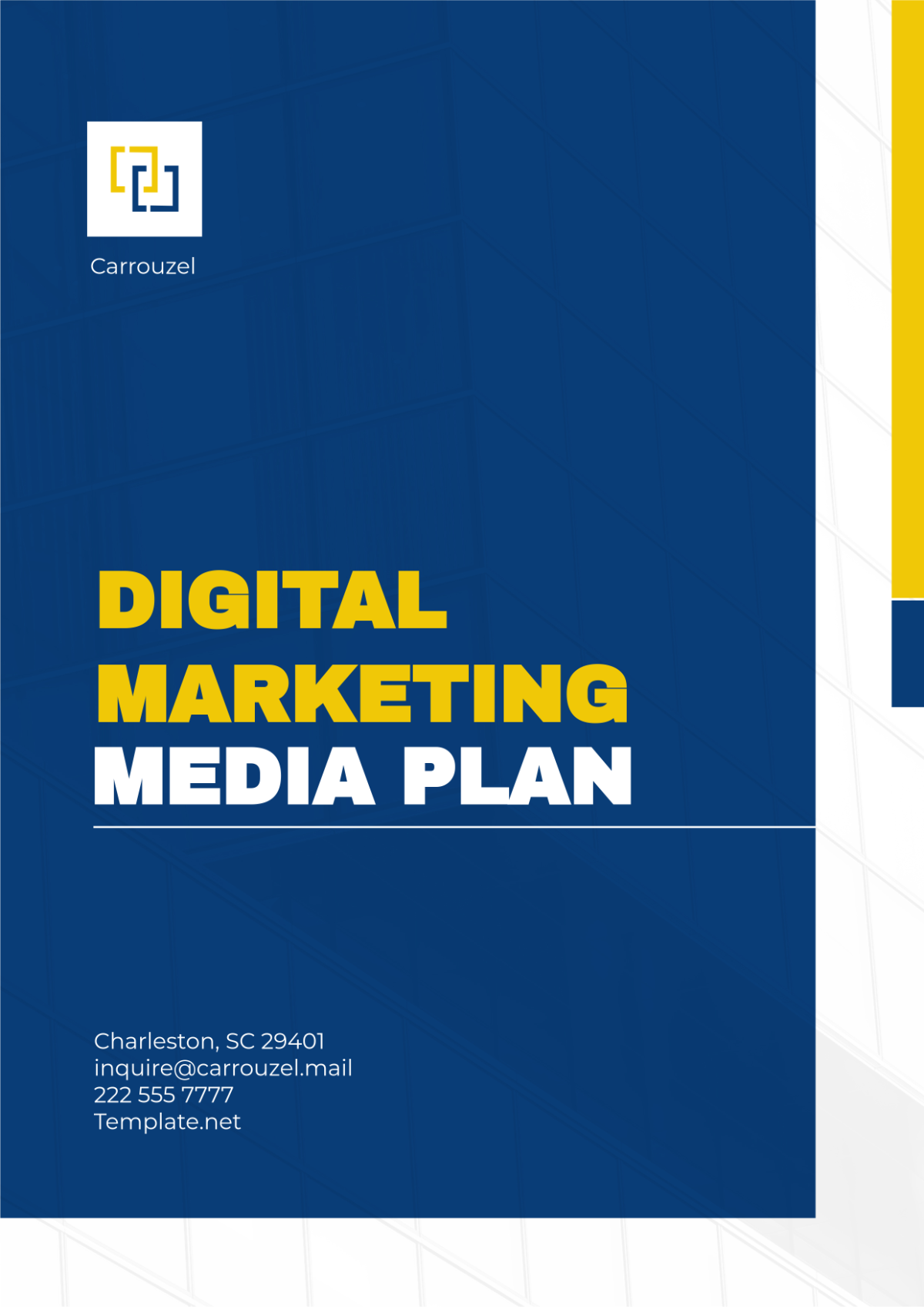
Prepared by:
[YOUR NAME]
[YOUR COMPANY NAME]
1. Overview
This Digital Marketing Media Plan outlines the strategies and tactics that will be implemented to achieve key marketing objectives for [YOUR COMPANY NAME]. The plan will focus on maximizing online presence and driving targeted results using various digital platforms, including social media, search engine marketing, email marketing, and content marketing.
2. Objectives
The primary objectives of this digital marketing campaign are:
Increase Brand Awareness: Expand the company’s digital footprint by reaching new audiences.
Generate Leads: Drive traffic to the website to convert visitors into leads.
Enhance Customer Engagement: Foster stronger relationships with existing customers through personalized communication.
Increase Sales: Boost e-commerce transactions or product sales through targeted campaigns.
3. Target Audience
Demographics
Age: 25-45
Gender: All genders
Income: Middle to high-income groups
Interests: Technology, business solutions, sustainability, etc.
Geographic Location: National or international (based on business operations)
Behavioral Characteristics
Tech-savvy, frequent internet users
Interested in making informed decisions before purchases
High engagement with online reviews, videos, and social media content
4. Media Channels & Tactics
Channel | Objective | Tactics | KPIs |
|---|---|---|---|
Social Media | Increase brand awareness | Ads, posts, engaging with followers | Engagement, followers, CTR |
Search Engine Marketing (SEM) | Generate leads & sales | Google Ads, target specific keywords | CPC, conversions, ROAS |
Email Marketing | Nurture leads & drive sales | Send targeted email campaigns | Open rate, CTR, conversions |
Content Marketing | Build authority & generate leads | Blog posts, SEO content | Traffic, leads, time on site |
Influencer Marketing | Increase brand trust | Partner with influencers | Reach, engagement, ROI |
5. Content Strategy
Blog Posts: Focus on SEO-driven content that addresses customer pain points, and questions, and provides valuable solutions.
Social Media Posts: Include a mix of promotional posts, educational content, testimonials, and user-generated content.
Video Content: Create tutorials, product demos, and customer testimonials. Videos should be optimized for platforms like YouTube, Facebook, and Instagram.
Infographics: Share visual data that simplifies complex topics related to your products or industry.
6. Budget Allocation
Channel | Budget Allocation |
|---|---|
Social Media Advertising | 30% |
Google Ads (SEM) | 25% |
Content Creation | 15% |
Email Marketing | 10% |
Influencer Marketing | 20% |
7. Timeline
Phase | Duration | Activities |
|---|---|---|
Phase 1 | 0-3 Months | Create content, ads, and email campaigns. |
Phase 2 | 3-6 Months | Analyze performance and adjust. |
Phase 3 | 6-12 Months | Expand content and optimize campaigns. |
8. Key Performance Indicators (KPIs)
Brand Awareness: Reach, impressions, follower growth, and engagement rate.
Lead Generation: Number of leads, form submissions, downloads, and email sign-ups.
Sales: Sales volume, conversion rate, and return on ad spend (ROAS).
Customer Engagement: Time on site, bounce rate, email open rate, and social media interactions.
9. Monitoring & Evaluation
Weekly Reviews: Analyze traffic, engagement, and conversions across all channels.
Monthly Reports: Provide a detailed analysis of campaign performance against KPIs, with actionable insights.
Quarterly Adjustments: Revise strategies based on in-depth performance reviews and market changes.
10. Conclusion
The success of this Digital Marketing Media Plan will depend on continuous monitoring, testing, and optimization across all channels. By tracking KPIs, adjusting strategies based on data, and focusing on content that resonates with our audience, we aim to drive meaningful engagement and ultimately achieve our business goals.
- 100% Customizable, free editor
- Access 1 Million+ Templates, photo’s & graphics
- Download or share as a template
- Click and replace photos, graphics, text, backgrounds
- Resize, crop, AI write & more
- Access advanced editor
The Digital Marketing Media Plan Template from Template.net is fully customizable and editable to fit your marketing strategy. This template is designed to streamline your media planning process, allowing for easy adjustments. It's editable in our Ai Editor Tool, offering a seamless experience to tailor every detail to your unique business needs.
You may also like
- Finance Plan
- Construction Plan
- Sales Plan
- Development Plan
- Career Plan
- Budget Plan
- HR Plan
- Education Plan
- Transition Plan
- Work Plan
- Training Plan
- Communication Plan
- Operation Plan
- Health And Safety Plan
- Strategy Plan
- Professional Development Plan
- Advertising Plan
- Risk Management Plan
- Restaurant Plan
- School Plan
- Nursing Home Patient Care Plan
- Nursing Care Plan
- Plan Event
- Startup Plan
- Social Media Plan
- Staffing Plan
- Annual Plan
- Content Plan
- Payment Plan
- Implementation Plan
- Hotel Plan
- Workout Plan
- Accounting Plan
- Campaign Plan
- Essay Plan
- 30 60 90 Day Plan
- Research Plan
- Recruitment Plan
- 90 Day Plan
- Quarterly Plan
- Emergency Plan
- 5 Year Plan
- Gym Plan
- Personal Plan
- IT and Software Plan
- Treatment Plan
- Real Estate Plan
- Law Firm Plan
- Healthcare Plan
- Improvement Plan
- Media Plan
- 5 Year Business Plan
- Learning Plan
- Marketing Campaign Plan
- Travel Agency Plan
- Cleaning Services Plan
- Interior Design Plan
- Performance Plan
- PR Plan
- Birth Plan
- Life Plan
- SEO Plan
- Disaster Recovery Plan
- Continuity Plan
- Launch Plan
- Legal Plan
- Behavior Plan
- Performance Improvement Plan
- Salon Plan
- Security Plan
- Security Management Plan
- Employee Development Plan
- Quality Plan
- Service Improvement Plan
- Growth Plan
- Incident Response Plan
- Basketball Plan
- Emergency Action Plan
- Product Launch Plan
- Spa Plan
- Employee Training Plan
- Data Analysis Plan
- Employee Action Plan
- Territory Plan
- Audit Plan
- Classroom Plan
- Activity Plan
- Parenting Plan
- Care Plan
- Project Execution Plan
- Exercise Plan
- Internship Plan
- Software Development Plan
- Continuous Improvement Plan
- Leave Plan
- 90 Day Sales Plan
- Advertising Agency Plan
- Employee Transition Plan
- Smart Action Plan
- Workplace Safety Plan
- Behavior Change Plan
- Contingency Plan
- Continuity of Operations Plan
- Health Plan
- Quality Control Plan
- Self Plan
- Sports Development Plan
- Change Management Plan
- Ecommerce Plan
- Personal Financial Plan
- Process Improvement Plan
- 30-60-90 Day Sales Plan
- Crisis Management Plan
- Engagement Plan
- Execution Plan
- Pandemic Plan
- Quality Assurance Plan
- Service Continuity Plan
- Agile Project Plan
- Fundraising Plan
- Job Transition Plan
- Asset Maintenance Plan
- Maintenance Plan
- Software Test Plan
- Staff Training and Development Plan
- 3 Year Plan
- Brand Activation Plan
- Release Plan
- Resource Plan
- Risk Mitigation Plan
- Teacher Plan
- 30 60 90 Day Plan for New Manager
- Food Safety Plan
- Food Truck Plan
- Hiring Plan
- Quality Management Plan
- Wellness Plan
- Behavior Intervention Plan
- Bonus Plan
- Investment Plan
- Maternity Leave Plan
- Pandemic Response Plan
- Succession Planning
- Coaching Plan
- Configuration Management Plan
- Remote Work Plan
- Self Care Plan
- Teaching Plan
- 100-Day Plan
- HACCP Plan
- Student Plan
- Sustainability Plan
- 30 60 90 Day Plan for Interview
- Access Plan
- Site Specific Safety Plan
